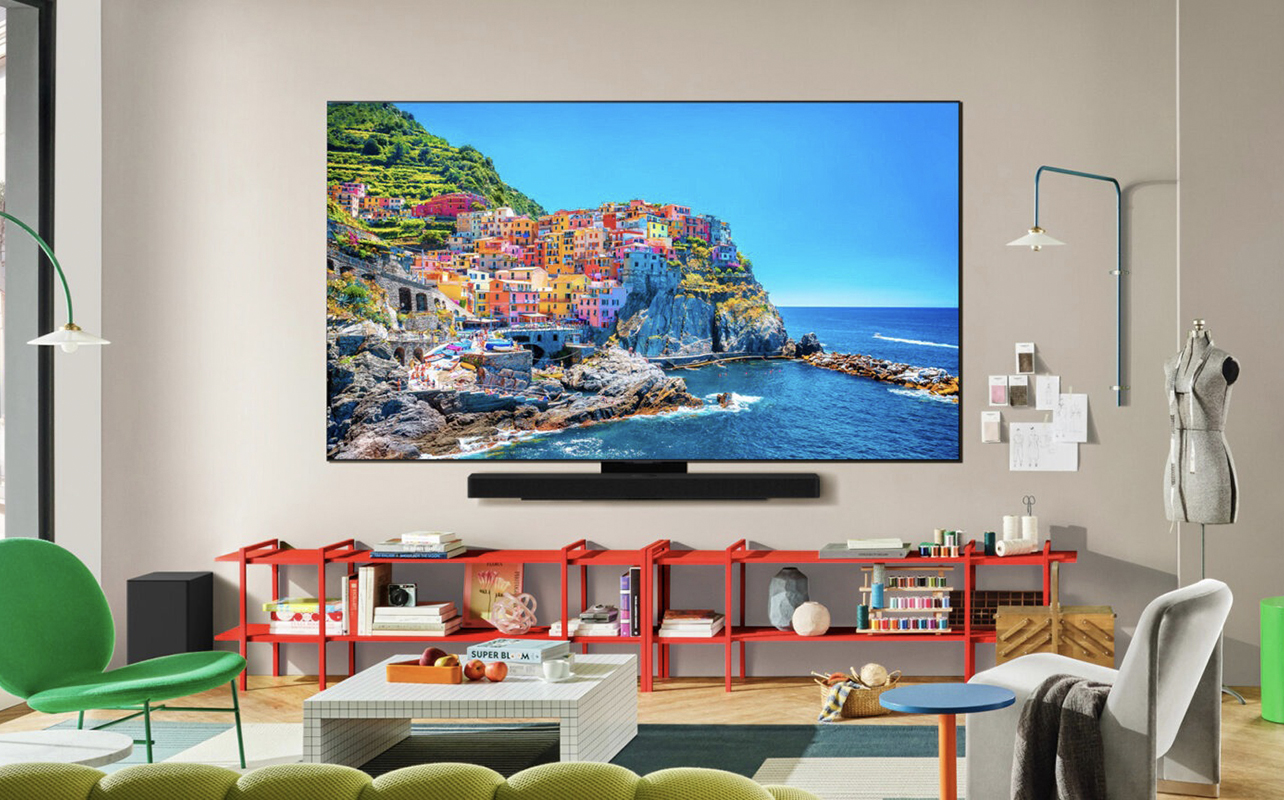
OLED TVs are popular premium TVs, providing vibrant colour and deep blacks. But not every OLED is the same. There are differences when comparing OLED TVs from the three main brands in the category, Samsung, LG, and Sony. All three brands are fantastic choices and they all approach OLED with their own unique twists on the technology. You might find specific features and engineering approaches, however, that will appeal to you based on your viewing habits with one versus the other.
In this guide, I’ll help you understand these nuances and what each brand does differently with their OLED TVs. Everything from picture quality to panel technology, including WOLED vs. QD-OLED, HDR formats, gaming performance, smart TV platform, and more will be covered. I’ll then provide buying tips to help you find the right OLED TV by screen size and brand.
What is OLED and why it matters
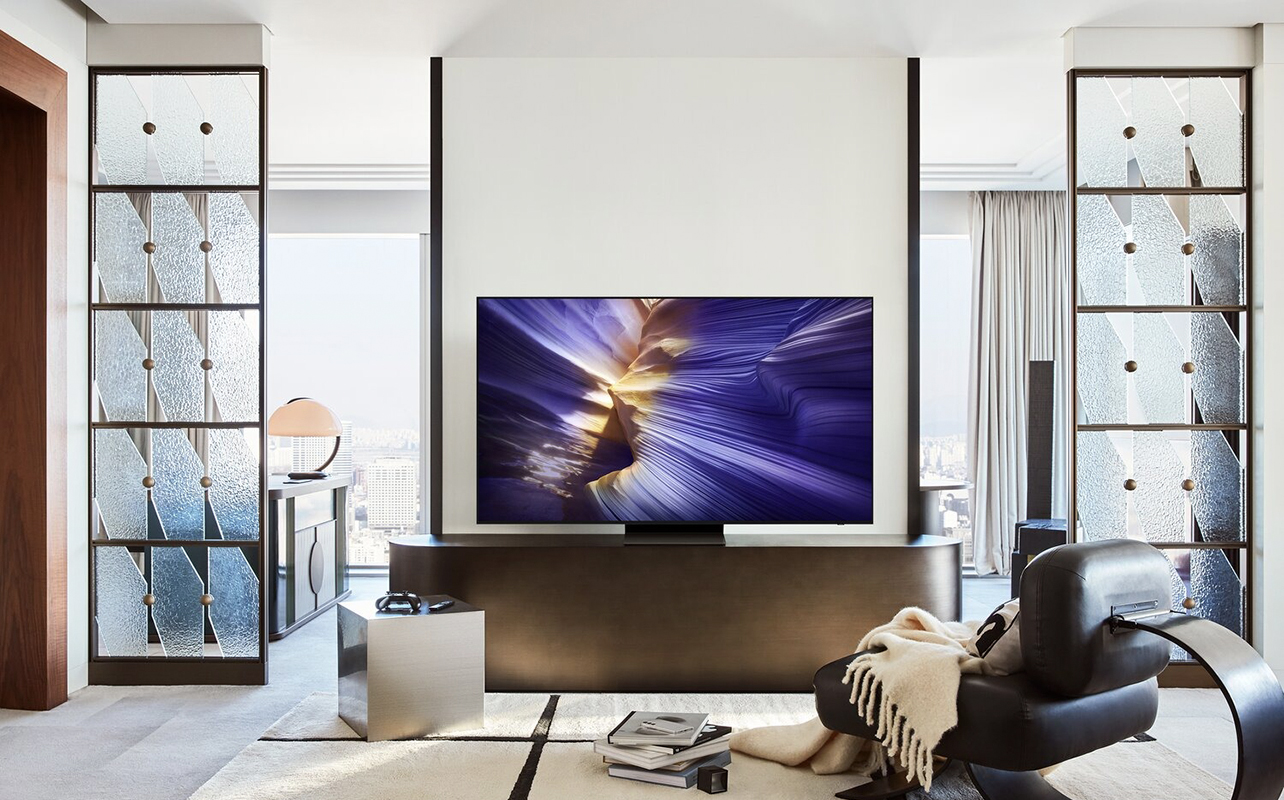
First, it’s important to understand what OLED TV is. OLED stands for Organic Light-Emitting Diode. It consists of individual pixels behind the screen that each light up individually. There’s no need for a traditional backlight like with LED TVs. Because pixels can turn completely on and off, you get deeper contrast, bright whites, and perfect blacks. That’s why OLED TVs are a favourite especially among movie lovers and gamers. They’re also generally more expensive than other TV types, but you’re paying for this enhanced viewing experience. Learn more about OLED TVs in this detailed explainer.
Just as with other TV types, not all OLEDs are created equal. While you’ll get a stunning experience with any of them, different brands use different panel technologies. There are two main types: WOLED and QD-OLED. Yes, this means more TV terminology and acronyms to learn. But it’s important to learn what they mean because these two types of OLEDs result in real-world performance differences.
Panel technology differences: LG, Samsung, and Sony
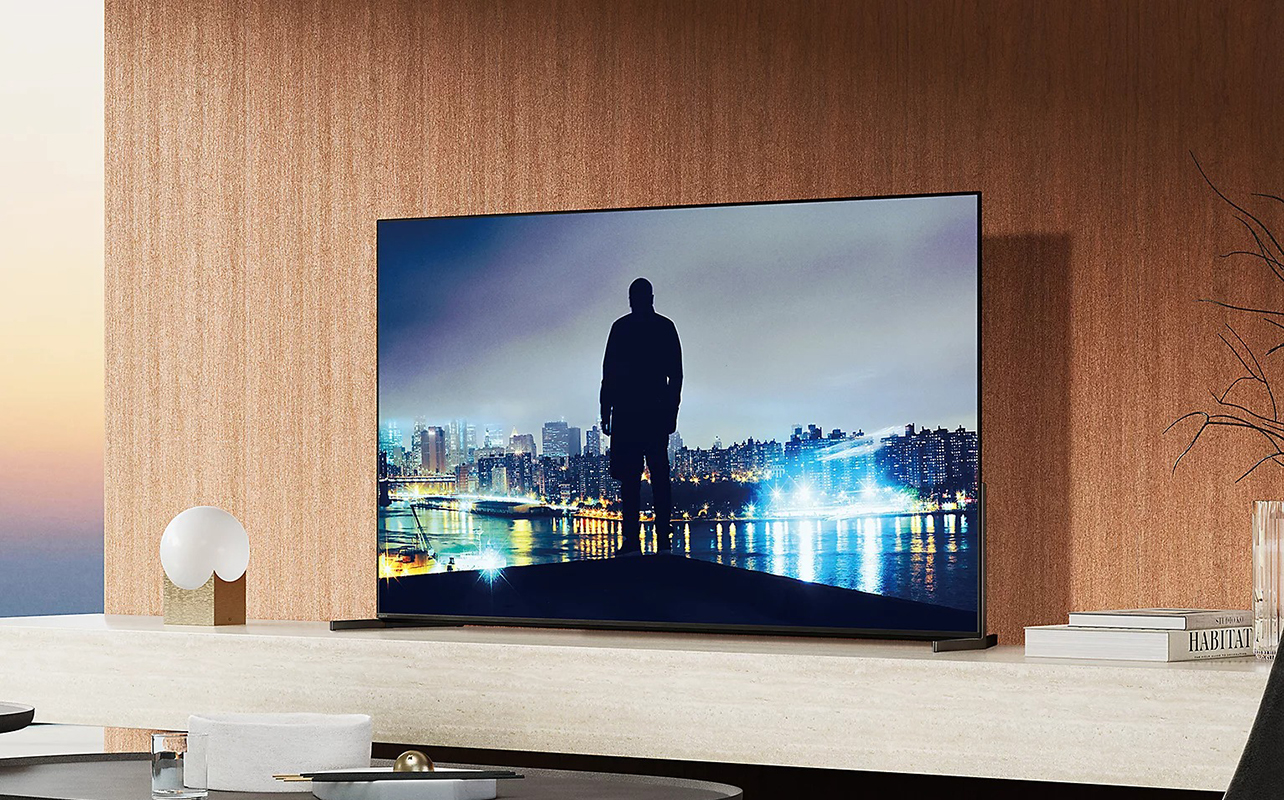
Breaking it down, LG uses WOLED panel technology, Samsung uses Q-OLED panel technology, and Sony uses a combination of both, depending on the model. Here’s how they work.
LG: LG WOLED panel technology, also called WRGB or white OLED, consists of white OLED plus red, green, and blue colour filters overtop, referred to as a colour refiner. Rather than self-emitting red, green, and blue pixels, the white light comes first and filters these into colours.
Samsung: QD-OLED quantum dot OLED panels combine OLED emitters with quantum dots to produce colour. Developed by Samsung Display, a blue OLED light is emitted and hits a quantum dot layer, producing the red and green. This eliminates the need for a colour filter layer altogether and the white subpixel found in WOLED.
Sony: Which OLED panel type is used in Sony OLED TVs? Sony uses a mix of both technologies. Some of its models use the LG Display WOLED panels while its more premium models use Samsung panels with QD-OLED technology.
Comparative summary: WOLED vs. QD-OLED

Let’s break down the core details to know about these two OLED TV types.
| Screen Type | Manufacturers | Top Strengths | Potential Weaknesses | Peak Brightness |
| WOLED | LG, Sony | Reduced blue pixel degradation, reduced risk of burn-in, great black level, wide viewing angle | Limited brightness and colour accuracy | 1,500 nits (some new models higher) |
| QD OLED | Samsung, Sony | Great saturated colours, brighter colours, diffuses reflections in bright rooms | Colour tinting off angle, not as deep blacks | Up to 4,000 nits |
Picture quality: Brightness, colour accuracy, and contrast
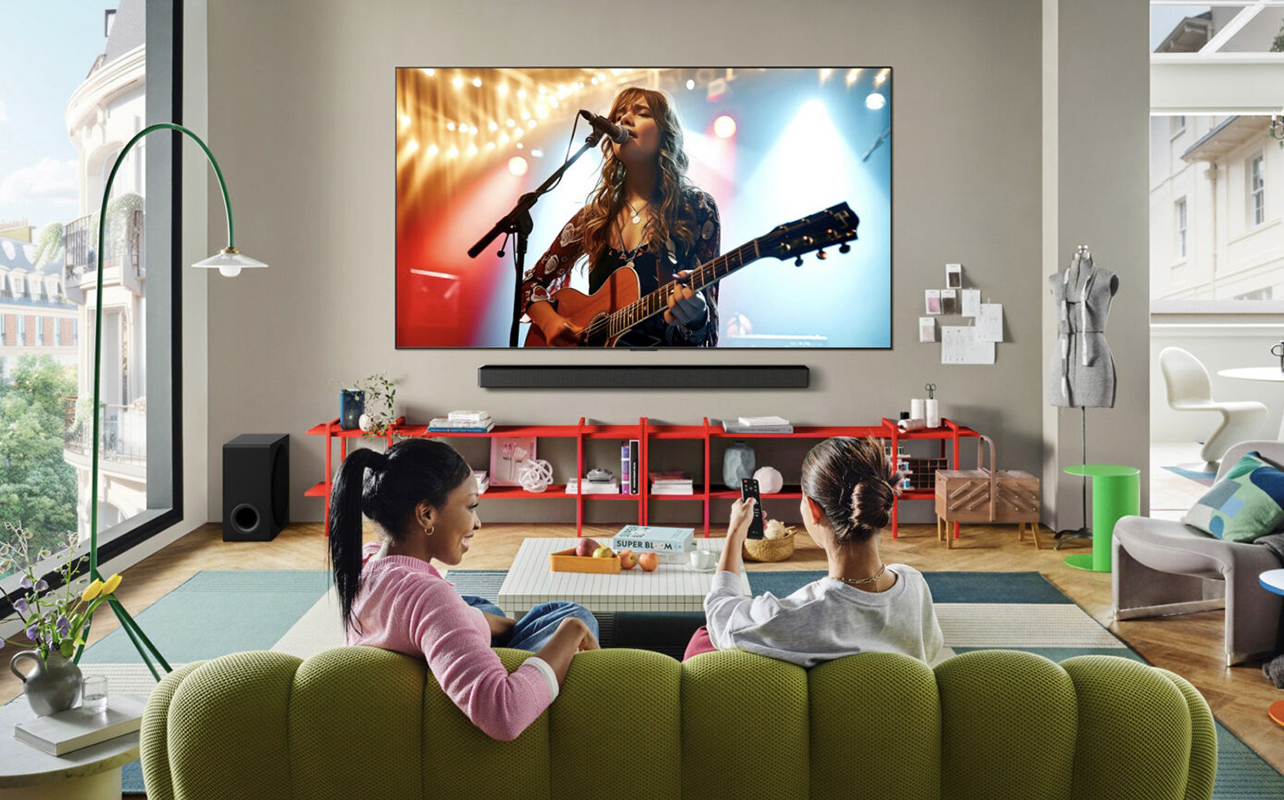
Now that we know how they work, what does it all mean? Let’s look at picture quality when comparing TVs from LG, Samsung, and Sony.
WOLED picture quality strengths and weaknesses
The primary benefit with WOLED technology in both LG and Sony OLED TVs is the reduction of blue pixel degradation, as well as another major issue with OLED TVs: burn-in. This can happen if an image is left on screen too long, like a network logo. They excel with black level, and have a wide viewing angle overall, so everyone in the room will get a pleasant, clear picture.
You might, however, notice limitations when it comes to brightness and colour accuracy. Some of the latest LG models, however, include Micro Lens Array (MLA), also known as META Technology. It’s designed to improve brightness, with TVs reaching up to 2,000 nits. LG’s new G5 model uses a four-layer RGB tandem panel, which consists of a pair of blue emitting layers and a red/green one, affording higher peak brightness reportedly up to 4,000 nits. So, they’re improving when it comes to brightness and overall picture quality.
QD-OLED picture quality strengths and weaknesses
By comparison, QD-OLED excels when it comes to displaying saturated colours at high luminance versus washed out images. You get brighter colours that are more vibrant, ideal when watching content like animated shows and movies, or while gaming. Overall colour brightness is punchier, with the potential for up to 2,000 nits brightness with some of the newest models.
But there are potential drawbacks. The anti-reflective coating on QD-OLED TVs can produce some colour tinting when you view off angle. However, some tests have shown that this coating can actually diffuse reflections better than WOLED TVs when in a bright room, which is something to consider. You may not see as deep a black level as you would with WOLED, depending on the TV.
Bottom line: If you’re looking to put the TV in a bright room, or you tend to watch a lot of HDR movies with bright highlights, look at the brightness level as well as anti-reflection technology in the model you want. This will go a long way in ensuring a pleasurable viewing experience. Conversely, if you watch mostly in a dark room, black level and viewing angles are the most crucial factors.
HDR and format support
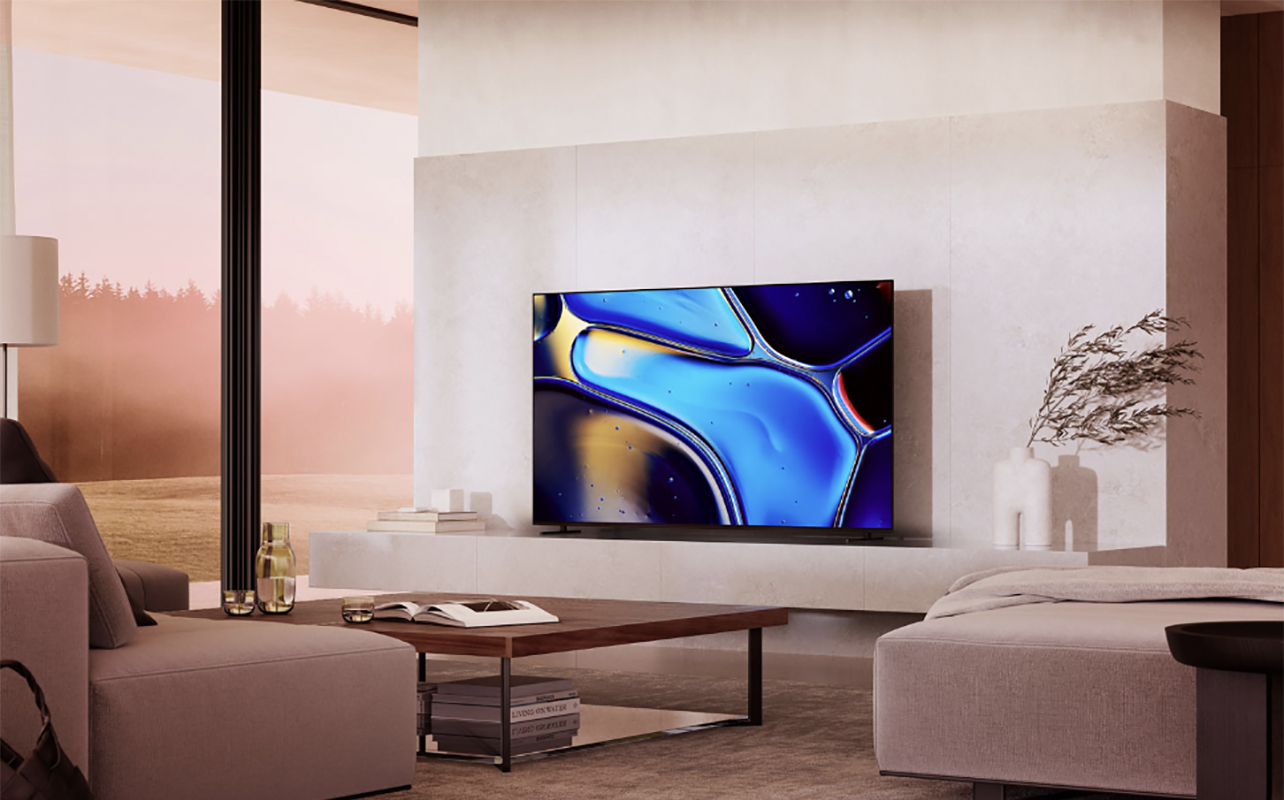
HDR support is important, especially for those who watch a lot of movies. HDR technology is designed to help further enhance brightness, colour, and contrast. The result is an even more immersive experience with deeper blacks, brighter highlights, and a wider range of colours. You feel like you’re really there in a beautiful nature scene, concert, or action movie. Once again, there are variations to HDR, and the three main OLED brands use different options. LG supports Dolby Vision, HDR10, and HLG in different models, Sony uses Dolby Vision, and Samsung supports HDR10+.
Dolby Vision HDR
This premium format adjusts an on-screen image frame-by-frame, so you get smooth colour gradation and support for high peak brightness. Think content where there are dramatic shifts in brightness, from daylight to darker scenes, for example. Only higher end TVs and select media players support it, and you need to find Dolby-certified content to truly enjoy its benefits. That’s available on streaming platforms like Netflix, Apple TV, and Disney+.
HDR10
The most common HDR format, HDR adds more colour depth and supports higher peak brightness. Improved contrast makes scenes like action sequences more engaging. But brightness and contrast remain consistent throughout, which means you’re lacking some of the more precise shifts you get with Dolby Vision HDR. You do get widespread support with most 4K TVs, Blu-ray players, streaming services, and gaming consoles, however.
HDR10+
An enhanced version of HDR10, HDR10+ basically replicates the same concept of Dolby Vision, making scene-by-scene adjustments. It’s also capable of higher peak brightness. You get overall better contrast with more detail in darker scenes and crisper images in brighter ones. Many smart TVs are compatible with HDR10+ and streaming services support it as well.
HLG
Hybrid Log-Gamma (HLG) is an open-source version of HDR created by the BBC and NHK. It is backward compatible with SDR displays so you get a brighter and better image overall. Virtually every model supports HDR10 or Dolby Vision anyway, but it’s worth noting.
Bottom line: Look at the content you most often watch. If it’s mostly Dolby Vision content, this might be a deciding factor and sway you towards LG or Sony. In fact, some people consider a lack of Dolby Vision to be a drawback. But if you primarily watch HDR10 content, a Samsung TV could be the perfect match.
Gaming performance

OLED TVs are popular with gamers for obvious reasons. There are specific features you’ll want to look for in the TV you choose.
Notably, these include the following:
Input lag: Also referred to as latency, this represents the time it takes for your device to send a signal to the TV and the display to show the image. This isn’t a big deal for regular TV viewing. But when you’re playing a game and doing something like running, jumping, dodging, or shooting, every millisecond is crucial. The lower the input lag, the better.
Refresh rate: This relates to the smoothness of the images on screen, important for action movies, sports, and gaming. The higher the refresh rate, the smoother the fast-moving image. The TV should have at least 120Hz refresh rate; higher than that is ideal for serious gamers.
Variable refresh rate (VRR): This is the process of syncing the refresh rate of the TV to the frame rate of the video source itself. The result is the prevention of screen tearing (visual artifacts that look like an image is “torn”) and stuttering (the appearance of freezing or skipping of the image).
HDMI 2.1 ports: You’ll find HDMI 2.1 ports on both the PlayStation 5 and Xbox Series X consoles and will need a TV that supports it to get the most out of your gaming experience. It affords higher resolutions and frame rates, and supports the bandwidth needed for intense games.
How do these TV brands differ for gaming?
LG, Samsung, and Sony TVs are all great for gaming, but they excel in different ways.
LG: Many of the OLED TVs boast low input lag, 120Hz refresh rates (some models up to 144Hz), and have HDMI 2.1 ports, making them popular among gamers. You’ll find features like AMD FreeSync for reducing stutter and screen tearing, variable refresh rate, and Auto Low Latency Mode (ALLM). There’s even a Game Optimizer dashboard you can use to adjust settings. LG’s claims about preventing burn-in are especially important for those who play games with static HUDs.
Samsung: Select QD OLED models boast 144Hz refresh rates and Motion Xcelerator technology, AI Auto Game Mode to intelligently detect what type of game you’re playing and optimize settings accordingly, ALLM, and built-in AMD FreeSync to reduce stutter and screen tearing. Gaming Hub provides access to games, apps, consoles, and cloud platforms.
Sony: You might find higher input lag on Sony OLED TVs, but you’ll still get a good gaming experience with features like variable refresh rate, ALLM, and PS Remote Play.
Bottom line: You’ll get a good gaming experience with all three. If you play games where there’s risk of burn-in, LG OLED TVs may do a better job at combatting this. Sony OLED TVs are best if you have a PS5 and can leverage the seamless connectivity and added features.
Smart TV platform & ecosystem
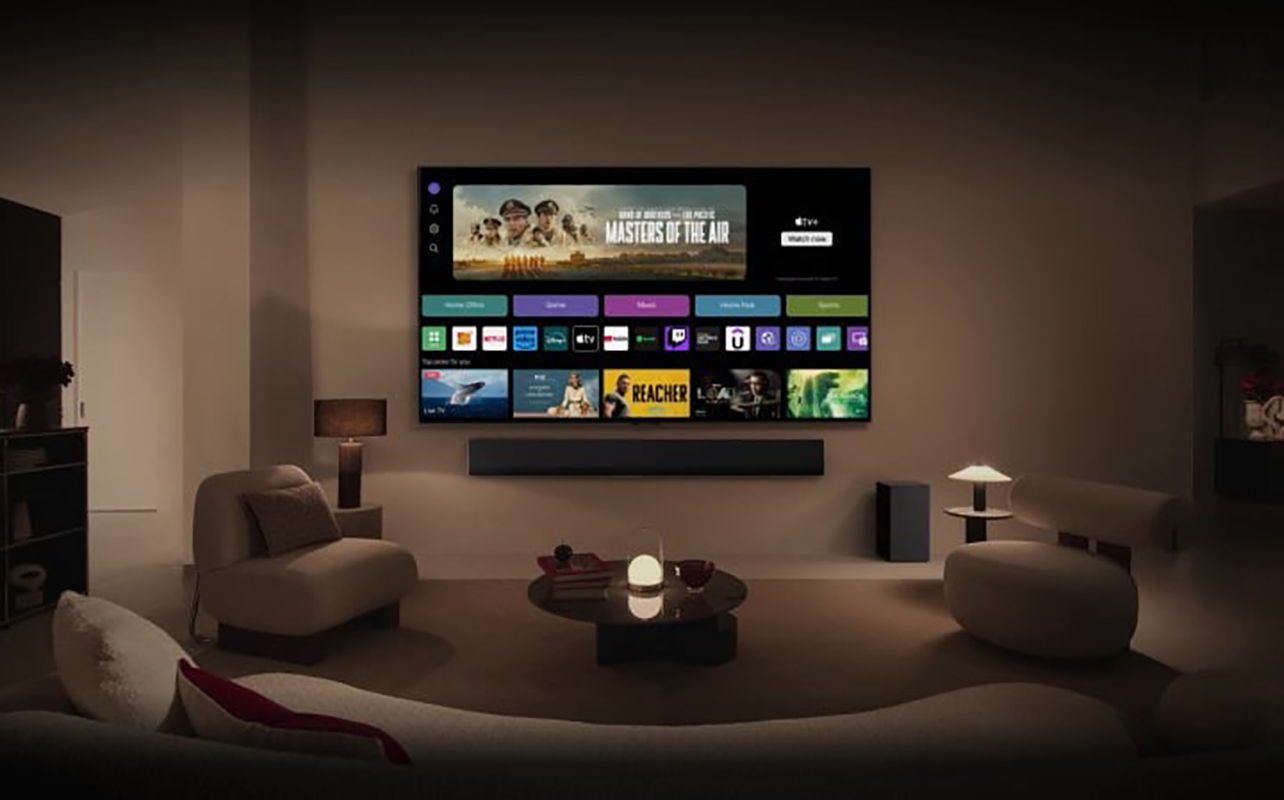
All three TVs sport different smart TV operating systems: webOS, Tizen, and Google.
webOS for LG
webOS is one of the most intuitive smart TV interfaces with user-friendly navigation, logically laid out menus, and good responsiveness. You get voice control support, personalized content recommendations, cloud gaming support, and free LG Channels. The pointer-style Magic Remote is a favourite. LG’s Re.New program assures that you’ll get software updates for years.
Tizen for Samsung
Available exclusively on Samsung TVs, Tizen offers smooth navigation, access to Samsung Gaming Hub, Samsung TV Plus channels, and integration with Samsung SmartThings. But the OS is typically not considered as user-friendly as others. Samsung promises seven years of support for its newer models with AI.
Google TV
Based on the Android platform, you get access to tons of Google features like Google Assistant, built-in Chromecast for casting content from a mobile device, content recommendations (powered by AI), and access to the Google Play Store to download tons of games and apps. Google pushes software updates all the time to these TVs.
Bottom line: Sony’s Google TV offers a great experience if you use Google services like Google Photos and YouTube. Google Home households will appreciate the integration into the ecosystem. In terms of ease of use and intuitive design, LG’s webOS is arguably the best, and my personal favourite.
Other features worth consideration

Before you make a decision about the right TV for you, there are a few other things to take into consideration.
Built-in speakers
Sony focuses heavily on a premium audio experience with its TVs through Acoustic Surface technology. LG and Samsung offer seamless integration with compatible soundbars, which will work synchronously with the TV’s built-in speakers. You need to buy the soundbar separately, but you might be able to find add-on deals and promotions.
Choosing the right screen size
Measure to find the right TV size for your room. Take the distance from your couch in inches, divide it by two, and that’s a good benchmark. If you sit 120 inches away from the TV, for example, go with a 60-65-inch TV. All three brands offer OLED TVs in a range of sizes, with an extra-large option at 97 inches from LG.
Warranty offering
Every TV comes with a limited warranty, but it doesn’t cover burn-in: that’s considered to be caused by user activity and isn’t a manufacturer defect. If you’re concerned, invest in an extended warranty that covers burn-in (if one is available), or go with an LG OLED that appears to be the best at combatting this issue.
Accessories
Some TVs come bundled with accessories like stands, wall mounts, cables, smart remotes, even matching soundbars.
Pricing and value
If you’re on a tighter budget, find step-down models from every brand for great deals. Keep an eye out for sales and you could save hundreds on a more premium model.
How to narrow down your selection: Practical buyer’s checklist
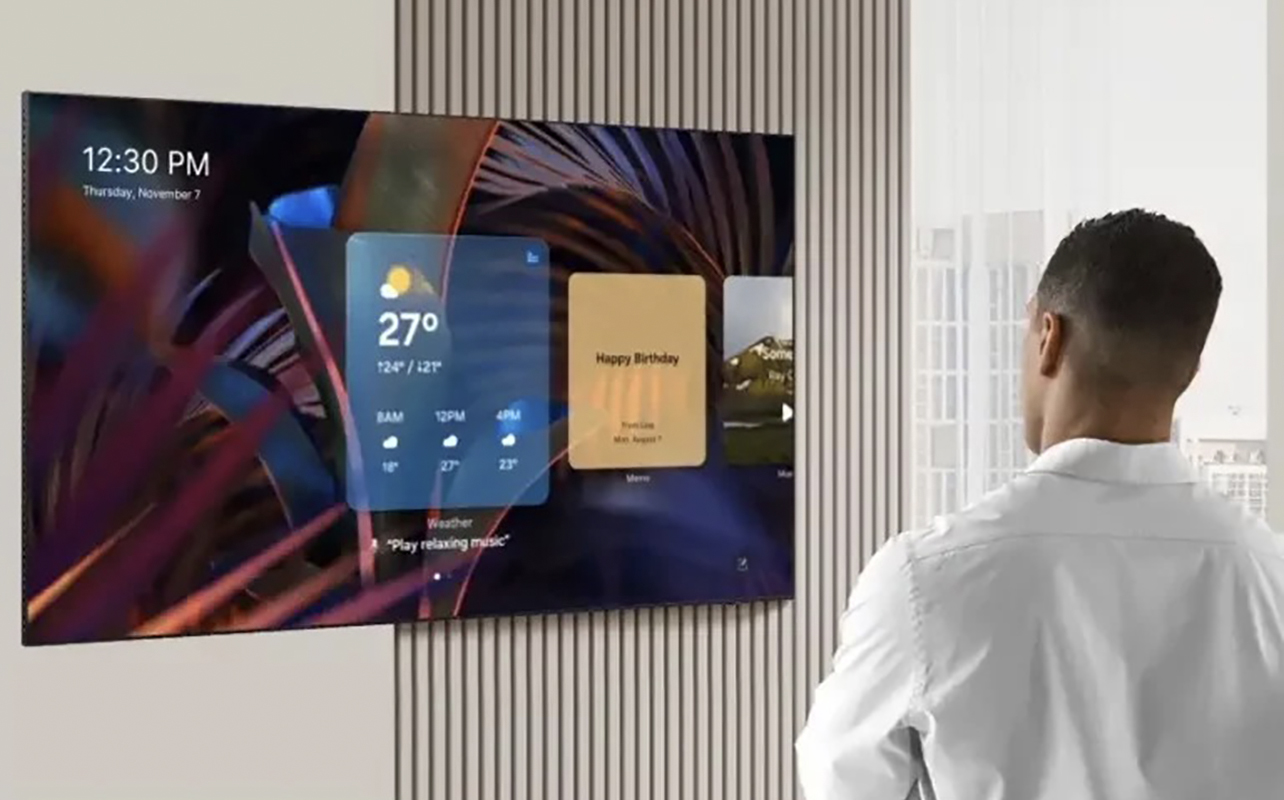
What should you look for when buying an OLED TV? Here’s a quick checklist
- Brand and type: Choose from LG, Samsung, and Sony as the top three brands and WOLED or QD-OLED types, keeping in mind the advantages and disadvantages of both.
- HDR or Dolby Vision support: What content you’ll be watching and what picture quality support you need?
- Gaming needs: If you’re a gamer, run down the gaming-related specifications to ensure the TV measures up.
- Smart TV platform: Which is easiest to use and provides access to the apps you want? Consider smart home integration as well.
- Built-in speakers: If you don’t have speakers or a soundbar, prioritize enhanced built-in audio.
- Screen size: Measure and choose the appropriate size for the room.
- Warranty offering: Consider an extended warranty that covers burn-in if one is available and this is a concern.
- Accessories: Decide how and where you will mount it and what accessories it comes with or that you might need.
- Pricing: Stick within a budget or wait for sales so you can buy up while saving big.
The differences among these TVs can help you make the right decision to meet your needs. If you want Dolby Vision, for example, go with Sony. For reduced reflections in a bright room, Samsung might be the best choice while LG excels for deep blacks and reducing the risk of burn-in.
Consider other features that matter to you beyond picture quality, like specifications and technologies related to gaming and smart TV interface. Compare OLED TVs by screen size and brand at Best Buy Canada, reading through specs and model-specific reviews for further insight.
Ready to go OLED?

If you’re ready to switch to an OLED, congratulations! The difference will be tremendous, especially for movies and gaming. When it comes to LG vs. Samsung vs. Sony, each brand brings a slightly different approach to their take on OLED TVs. It’s about finding the specs and features that are most important to you then narrowing it down by both brand and specific model. To do this, it’s important to know the difference between the panel technologies and how these perform in real-world situations. If gaming performance and/or the smart TV interface are priorities, keep these in mind as well.
Flip through the available OLED TVs and explore all the current models, reading the descriptions with this understanding in mind. Great models to consider on the higher-end are the LG C5, Samsung S90F, and Sony Bravia 8 II. Stay tuned as later, I’ll cover these and other models in depth. Learn more about these and other OLED TVs at Best Buy Canada.





